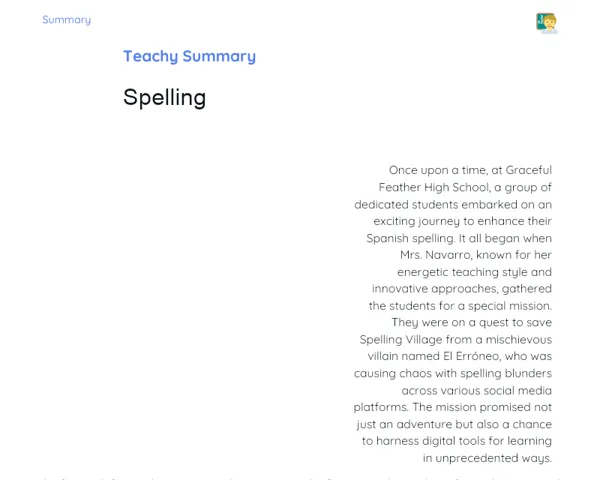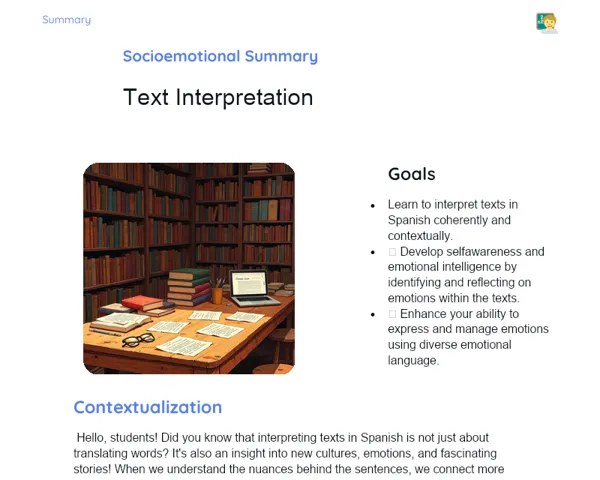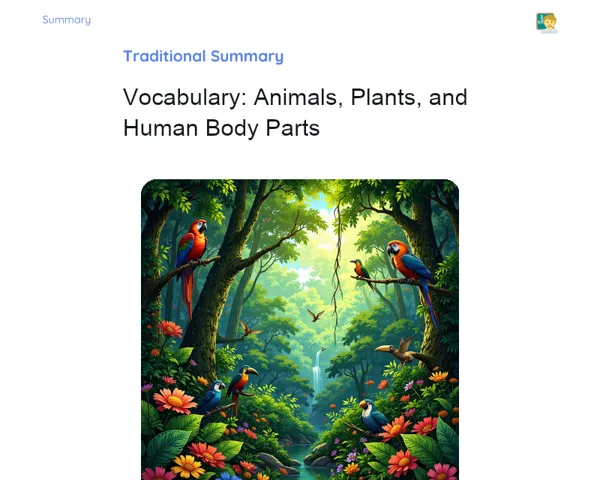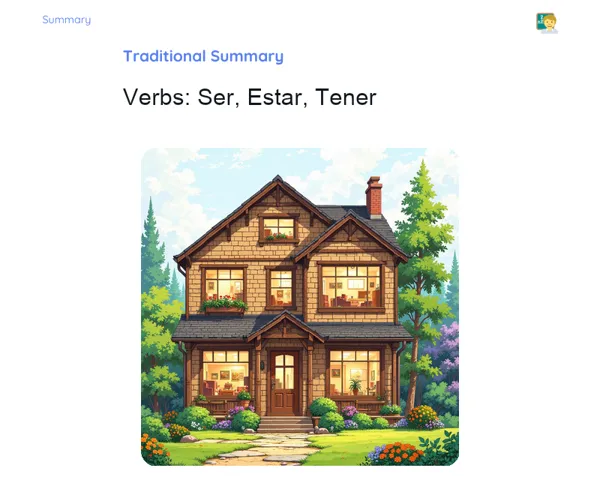Summary Tradisional | Homographs and Homophones
Contextualization
In the Spanish language, just like in many languages we deal with, there are words that can lead to confusion due to their unique features. Two major linguistic concepts that illustrate this are homographs and homophones. Homographs are words that are spelled the same but carry different meanings, which may or may not be pronounced the same way. On the flip side, homophones are words that sound the same but have different spellings and meanings. Grasping these two types of words is essential for clear and effective communication. For instance, the word 'banco' can refer to both a bank and a bench, depending on the context, which exemplifies homographs. Meanwhile, words like 'vello' (hair) and 'bello' (beautiful) are homophones, as they share the same pronunciation but differ in spelling and meaning. Mastering these nuances not only helps minimize misunderstandings but also enriches vocabulary, fostering better fluency in Spanish.
To Remember!
Definition of Homographs
Homographs are words that share identical spelling yet have different meanings. Their pronunciation may vary, but the spelling remains the same. The context is key in deciphering the intended meaning of a homograph. For example, the word 'banco' can mean either a financial institution or a bench. In a sentence like 'Voy al banco para sacar dinero', 'banco' clearly denotes a financial institution. Conversely, in 'Me senté en el banco del parque', 'banco' refers to a bench. This reliance on context makes homographs both intriguing and challenging for language learners. Additionally, exploring homographs can significantly enhance vocabulary and comprehension, providing students with a wider lens through which to understand the language. This also sharpens text interpretation skills, emphasizing the importance of context in discerning the correct meaning.
-
Homographs share the same spelling but differ in meaning.
-
Their pronunciation may or may not match.
-
Context is key for determining the correct meaning.
-
Examples: 'banco' (bank) and 'banco' (bench).
Definition of Homophones
Homophones are words that sound alike but differ in spelling and meaning. The distinction is made through both spelling as well as the context they are used in. For instance, in Spanish, 'vello' translates to 'hair', while 'bello' means 'beautiful'. Accurate spelling plays a critical role in preventing confusion between homophones. A slip-up can completely alter the meaning of a phrase. For example, 'Tengo vello en los brazos' means 'I have hair on my arms', whereas 'Tengo bello en los brazos' is grammatically correct but carries a different meaning. Familiarity with homophones strengthens precision in written communication and significantly enriches vocabulary. It’s vital for students to practice the correct spelling of these words and understand their usage across different contexts to enhance clarity in communication.
-
Homophones are words that sound the same but have different spellings and meanings.
-
Correct spelling is crucial to avoid mix-ups.
-
Context plays a role in distinguishing meaning.
-
Examples: 'vello' (hair) and 'bello' (beautiful).
Detailed Examples
Providing clear examples can greatly bolster understanding of homographs and homophones. Let's begin with homographs. The word 'papa' can signify 'potato' or 'father', contingent on the context. In 'Comí una papa deliciosa', 'papa' means 'potato'. Meanwhile, in 'El papa dio un discurso', it refers to 'father' (this can be interpreted as dad or pope). As for homophones, we encounter 'cocer' and 'coser'. Both share the same pronunciation, but 'cocer' means 'to cook', while 'coser' means 'to sew'. Using them in sentences: 'Voy a cocer la carne' (I’m going to cook the meat) employs 'cocer', while 'Voy a coser el vestido' (I’m going to sew the dress) uses 'coser'. These examples underscore the significance of context and spelling in communication. Additionally, delving into how these words function in various sentences aids comprehension and helps prevent confusion, improving accuracy in both written and spoken communication.
-
Practical examples fortify understanding.
-
Homographs: 'papa' (potato) and 'papa' (father).
-
Homophones: 'cocer' (to cook) and 'coser' (to sew).
-
Investigate various sentences for deeper meaning.
Differences in Pronunciation and Meaning
Pronunciation can differ among homographs but remains unchanged among homophones. In the case of homographs, the exact spelling can have various pronunciations based on context. For instance, 'banco' might sound the same, yet its meanings fluctuate between a financial institution and a bench. Conversely, homophones possess identical pronunciation, though their spellings and meanings diverge. A solid grasp of these differences is essential to sidestep misunderstandings in communication. Recognizing that 'vello' and 'bello' sound the same yet carry different meanings cement the importance of precise communication. Intonation and context further assist in understanding a word’s meaning, making these distinctions vital in language acquisition. By mastering both pronunciation and spelling, students can communicate more effectively, reducing potential misunderstandings.
-
Pronunciation may vary in homographs whereas homophones have the same sound.
-
In homophones, the spellings and meanings differ.
-
Context and intonation aid in understanding meaning.
-
Examples include 'vello' (hair) and 'bello' (beautiful).
Key Terms
-
Homographs: Words sharing the same spelling with different meanings, possibly with different pronunciations.
-
Homophones: Terms that sound alike yet differ in spelling and meaning.
-
Context: The setting or situation influencing a word's meaning, key for accurate interpretation.
-
Spelling: The correct representation of a word, vital for preventing homophone confusion.
-
Pronunciation: The way a word is articulated, which may vary in homographs but remains constant in homophones.
Important Conclusions
In this lesson, we examined two significant linguistic aspects of the Spanish language: homographs and homophones. Homographs, which share spelling but vary in meaning, can also differ in pronunciation based on context. Conversely, homophones sound the same, but differ in spelling and meaning, underscoring the necessity of correct spelling to avoid confusion. Grasping these distinctions is paramount for effective communication. Through detailed examples and practical exercises, students observed the role of context and intonation in determining proper word meanings. This not only enhances precision in written and spoken forms but also broadens vocabulary and comprehension within the Spanish language. The lesson also stressed the need for strategies to avoid mix-ups, such as being mindful of context and carefully reviewing spelling. Mastering homographs and homophones is essential to mitigate misunderstandings and foster clarity in communication. We encourage students to keep delving into these concepts to advance their proficiency in the Spanish language.
Study Tips
-
Engage in writing and reading homographs and homophones in varied contexts to deepen understanding.
-
Utilize dictionaries and online tools to verify correct spellings and meanings of words.
-
Craft sentences using homographs and homophones, and have a peer review them to catch potential errors, enhancing clarity in communication.



